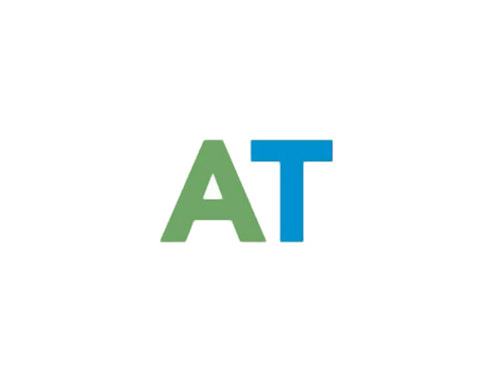A tourists takes a picture of the famous Great Sphinx with Khafre’s Pyramid in the background, at
AFP VIA GETTY IMAGES
Brittany Palmer was born without arms below her elbows. The disability did nothing to discourage the love of travel she was born with. Neither has the joint pain in her knees which makes walking long distances challenging. The only thing to crimp Palmer’s travel style was the pandemic which forced her cancelling highly anticipated trips.
So, there she was, a corporate attorney in her thirties who loved traveling, sitting home like the rest of the world. Her mind wandered. To the places she’d been and the places she’d like to go. To the 61 million adults in America with a disability. To the advent of Zoom meetings.
When she first came across the phrase “virtual tour,” a spark was ignited. A spark that before the end of 2020 would become Beeyonder, a premier virtual travel company offering personalized, interactive tours with local guides around the world. Forget travel TV shows and documentaries, Beeyonder walking tours place you alone or with friends alongside experienced local guides in, say Berlin for instance, live via Zoom at street level. The guide wears a headset and converses with participants just like they would on any in-person tour. Locals and tourists walk through the background. The roughly hour-long tours occur in real time.
How Beeyonder Works
Individuals book tours for themselves online after searching for locales or topic areas which interest them. “Queer Argentina: The History of South America´s Friendliest Country,” “Explore India’s First Open Air Art District,” “Get on the TV Set of ‘Emily in Paris.’” Find one you like and request a day and time. All tours are private with different pricing structures depending on the size of each group.
Requests then go to guides in the local area who are all licensed and have been vetted by Beeyonder. Guides manage their own tours and schedules. Once a time slot and tour have been agreed upon by guide and guest, the online purchase is made after which guides send guests links, typically to Zoom, for participation in the upcoming tour.
On walking tours, guides connect to guests via smart phone with a Gimbal support to stabilize the video and headphones to communicate then hit the street, or palace, or hop in a gondola in Venice, or go up in a hot air balloon.
Presentation tours are fixed-setting experiences with videos, pictures and slides, still live with a local guide and interactive via voice or text chat.
Beeyonder does offer a concierge service which will manage all the booking details for you and a “sensory package” upcharge to any tour providing additional resources about the guide, weather, links to recipes, music playlists, books to read, souvenir information as well as details on how travelers can impact the country they’re visiting. The sensory add-on attempts to bring the smells and sounds and tastes of a place to Beeyonder users in addition to the sights. For instance, on Beeyonder’s Costa Rica Coffee Plantation tour, the sensory upgrade links to coffee for purchase from the producer being visited.
A self-service private tour for up to 15 people costs $225. Not bad for 10 folks spending an hour virtually sailing on the Nile River. Prices and group sizes go up from there with discounts for multiple tour bookings and seniors.As of February 10, 2023, nearly 450 walking and presentation tours are being offered by Beeyonder with nearly 2,000 virtual tours having been enjoyed by 30,000 guests all since the company launched. Popular tours include the Pyramids in Egypt, a koala discovery walk in Australia–one of Palmer’s favorites–and an Ireland castles adventure.
New tours are continually added as Beeyonder welcomes guides from around the world interested in partnering to reach out and introduce themselves, and Beeyonder also seeks out guides in locations its missing which have strong public interest.
As Beeyonder educates travelers to the advantages of virtual tours, it does so as well with guides, many of whom think all platforms for virtual tours are free. Beeyonder virtual tours pay guides competitively with what they’d earn from in-person tours, taking only a 20% commission on standard bookings.
New World Travelers
VERSAILLES, FRANCE – JUNE 06: A general view of the gardens at the Chateau de Versailles as the
GETTY IMAGES
When Palmer launched Beeyonder, her vision was providing more equal access to travel around the world. From people with disabilities, caregivers who can’t get away, or individuals who are less mobile or not of age to travel independently, Beeyonder was designed to allow them to explore dream destinations while overcoming accessibility challenges.
Her biggest surprise to date in running the company has been how many other groups have become interested in the virtual tours.
“I started thinking this is going to be for people with disabilities and other conditions that prevent travel, like agoraphobia or fear of flying, but then you have people undergoing dialysis or getting treatment for cancer,” Palmer told Forbes.com. “A lot of seniors have limited mobility. Caregivers are a huge segment of this group. You don’t really think about people who care for others who can’t travel–two to three people for every person who can’t travel may also not be able to travel.”
Palmer quickly realized Beeyonder would appeal to a much wider audience. Paroles. Trainings for companies expanding into different locations around the world who want to introduce their employees to those places and cultures.
“We’ve had a woman who was a troop leader for the Girl Scouts and she wanted her girls to be able to earn their explore travel badge,” Palmer recalls. “Schools was a big one that I hadn’t even thought about. A lot of kids don’t have the opportunity to go overseas and travel and experience the world; what better way to learn about things you’re learning in school than to actually see them in the real world?”
The company started with two employees is now up to a team of 11 thanks to all the unexpected users virtual travel appeals to.
Public Art Archive
A mural painting is seen on 13th street in the city center of Philadelphia on December 3, 2017. The
AFP VIA GETTY IMAGES
Another effort virtually bringing people to places around the world, this one focused specifically on art, is the Public Art Archive. The PAA is a singular platform for connecting with public art in any community across the U.S. and beyond. Big and small. Big like Detroit. Small like Oshkosh, WI.
As one of the largest active databases of public art, the PAA houses over 50,000 images and multimedia elements and nearly 20,000 artwork records representing the work of over 6,000 artists.
Its new website launched on January 23, 2023, transformed into a general interest public art destination promoting discovery from a platform first designed as a visual library database where users typically knew what they were looking for prior to visiting. While maintaining its authoritative data standards useful to researchers, the Public Art Archive has been made more user friendly for non-academics simply seeking to find cool public art where they live, or may be traveling to, or want to see virtually, and the history, context, and meaning behind each work.
“With the Public Art Archive, our mission is to capture, index, and inventory every piece of public art in the United States, and eventually the world, and make its discovery a delightful experience as well as free and universally accessible—sort of the ‘IMDb for public art’,” Western States Art Federation Executive Director Christian Gaines said. WESTAF is the organization behind the project. “This dramatic redesign brings us closer than ever to realizing that dream.”
The new platform is entirely device-responsive, allowing users to explore location-based collections from their desktop, tablet and mobile devices. Want to browse murals in Philadelphia, monuments in New Orleans or public artworks by Keith Haring? Pop the terms into the Public Art Archive and create your own public art walking tour, or simply enjoy the artworks virtually from wherever you may be.
See more at: https://www.forbes.com/sites/chaddscott/2023/02/10/world-travel-made-accessible-with-beeyonder/?sh=24b670e7655e







